Posts in Category: For The Dogs
Get Your Dog Ready for Hunting Season
By Dr. Maria Krenz, DVM – ZimmVet-763-856-4848
Many people enjoy hunting as a hobby with their dogs. A little preparation can make the time fun for you and your dog.
Flea & Tick Prevention
Fall is peak time for transmission of lyme disease from adult ticks. Fall is also when many pets become infested with fleas. There are a variety of products on the market including topical and oral options. Talk to your veterinarian about what product is best for you pet.

Internal Parasites
Hunting dogs are at higher risk to contract roundworms and hookworms from the environment. These parasites can then be passed to people. Heartworm prevention, such as Sentinel or Simparica Trio®, deworms for these parasites and should be given once a month.
Vaccinations
Make sure your pet is current on vaccinations such as Rabies, Lyme and Leptospirosis. Hunting dogs are at increased risk of these easily preventable diseases. Also, if your dog is going to be hunting with a group of other dogs, its distemper combination, bordetella and influenza vaccinations should be up-to-date.
Exercise
Just like a person, if a dog is not properly conditioned before working hard, they can suffer from performance injuries such as pulled muscles, sore joints and strained or torn ligaments. Gradually increase your pet’s activity over a couple weeks prior to the start of hunting. In addition, be sure to allow your pet time to rest while hunting.

Food
Overweight pets are at an increased risk for performance injuries as well as exhaustion. Make sure your pet is an ideal weight prior to the start of hunting season. For pets that are more than a couple pounds overweight safe weight loss needs to be done gradually over many months. Contact your veterinarian to make a weight loss plan for your pet. During hunting, a dog’s calorie intake increased. Feeding small frequent meals can help your pet keep up to the demands of hunting.
Paws
Many dogs can wear down their paw pads and form painful ulcerations. Keep protective boots on hand for your dog to wear. Dogs can suffer from cuts and debris in their eyes, especially in grass and wooded areas. Keep an eye saline solution with you, along with some bandaging material to stop bleeding until you can get to your veterinarian. Your veterinarian can help you put together a first aid kit for your pet or you can purchase a premade kit.
Senior Hunters
Senior dogs can often remain active and healthy with the help of your veterinarian. Senior pets benefit from a daily glucosamine supplement such as Dasuquin. This supplement needs to be started at least a month prior to hunting if your dog is not taking it regularly year round. Senior dogs do well on pet pain medication started a day prior to the hunt and continued daily. The goal is to control the pain before it builds up. If your pet is already on a daily pain medication your veterinarian can prescribe additional medications to help during hunting. Contact your veterinarian to make a plan to keep your senior hunter comfortable.
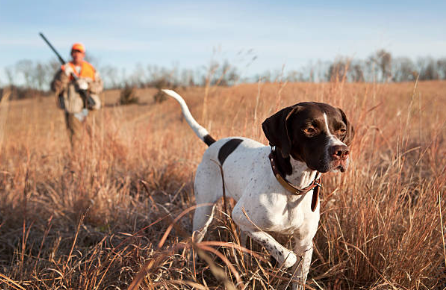
Disclaimer: This written content is meant to be educational and is not medical advice. Always consult a veterinarian about medical advice for your pet.
Allergies in Pets –
By Dr. Maria Krenz, DVM – ZimmVet
Imagine that you have burning eyes, itchy skin, or hair loss, but without the ability to talk. Just like people, many pets suffer from allergies. If you have owned a pet with allergies, you know the common signs: skin redness, scratching, licking, chewing at the skin, ear and skin infections, hair loss, excessive paw licking among others. Pet allergies are a medical condition that requires lifelong management to control the symptoms. Pets that are affected only during certain times of the year, such as the Fall, need to start treatment prior to when allergy signs begin for best management.

Types of Allergies
Atopic Dermatitis, also known as Atopy, is the term for inhaled seasonal pet allergies from sources such as pollens and molds in the environment. Pets that itch and scratch only during one season during the year have Atopic Dermatitis. Many pets have multiple things they are allergic to causing them to have allergy symptoms year round. Weeds such as ragweed is the most common trigger for allergies in the fall. Fall allergies last until we have a couple hard frosts.
Start Treating Now
Pets that suffer from fall allergies need to start treatment to manage the symptoms usually mid-July. It is best to work with your veterinarian to create a plan that is best for your pet. Common treatments include the following.
- Antihistamines: Benadryl is a common medication used to control allergies. Often people do not give a high enough dose to help the pet, it also must be given at least 2-3 times per day during the entire allergy season. Some pets will get drowsy on the medication. Other antihistamines include cetirizine, hydroxyzine, and others.
- Shampoos: Bathing a pet can help to remove allergens that are on the surface of the skin. Often, pets with allergies have a poor skin barrier, which allows more allergens to get into the body. Bathing is usually needed at least every 2-3 days. Some shampoos may contain anti-itch medications, and antibiotic or antifungal medications to control secondary infection.
- Topical Sprays: For pets that are itching in one general location on their body, a topical spray that includes a hydrocortisone and antibiotic can help.
- Omega Fatty Acid Supplements: These supplements are a natural anti-inflammatory agent, and can help reduce itching and help with general skin health.
- Dermaquin: This product is a natural supplement that comes in a form as a soft chew. Dermaquin helps strengthen the skin barrier which decreases a pet’s allergic response.
- Apoquel: This is a very effective allergy medication. Apoquel directly affects the molecule that causes itch and inflammation in dogs. Apoquel is a tablet medication that is given daily.
- Cytopoint: This allergy treatment is an injection. The effects last about 4-8 weeks. Its mechanism is interrupting the pathway that causes itch and inflammation in dogs.
- Other allergy treatments include immunotherapy and Atopica. These treatments need to be given all year round to be effective.
Infections also cause Itch
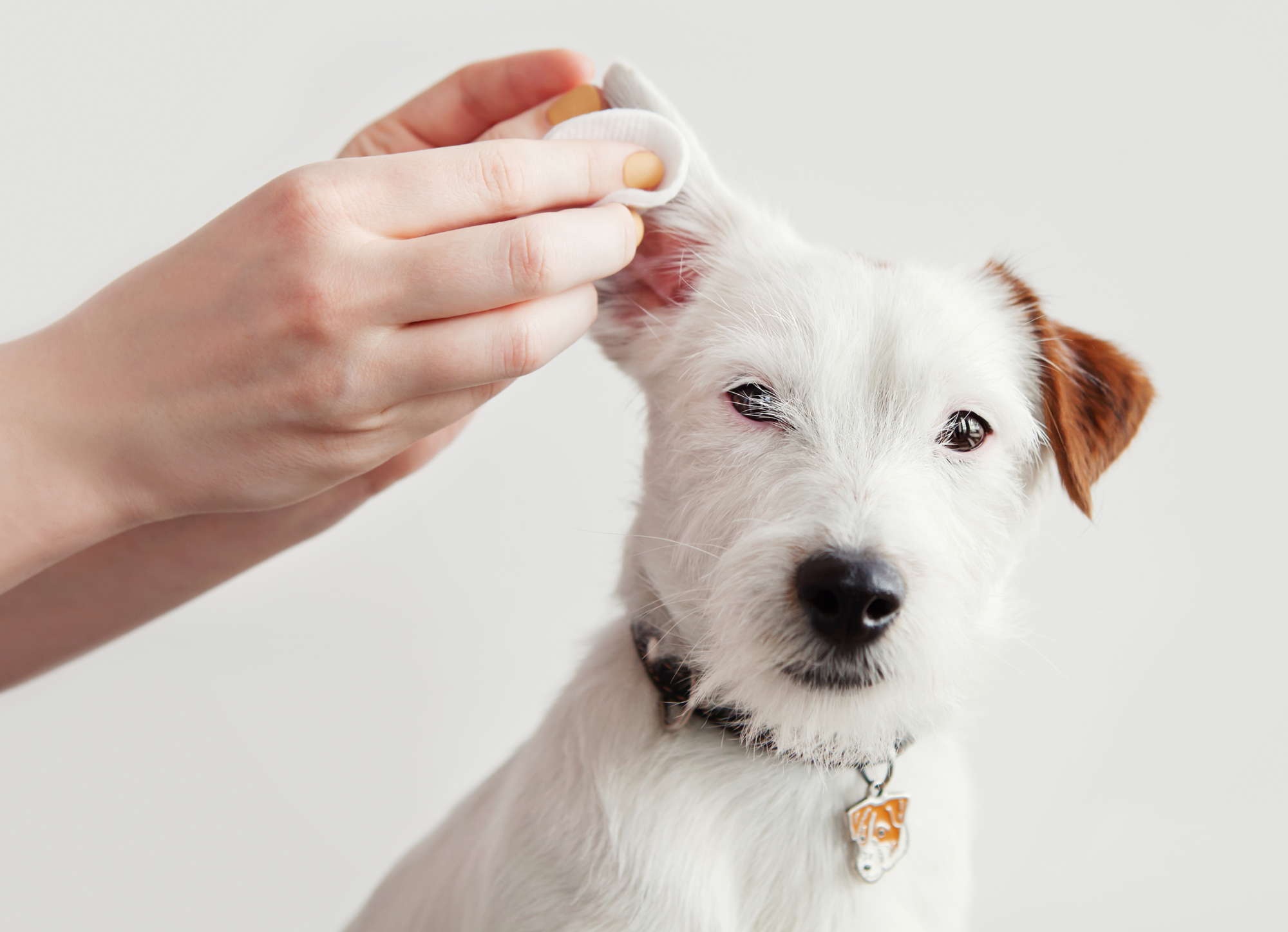
Allergies can be a very frustrating condition for pet owners. Your veterinarian is here to help find the best treatment for your pet. Often, pets with allergies develop secondary bacterial and fungal skin infections that need to be treated with oral and topical medication. Ear infections are also common secondary condition that would need prescription medication. For tough cases, your normal veterinarian may refer you to a veterinary dermatologist (skin specialist).
Disclaimer: This written content is meant to be educational and is not medical advice. Always consult a veterinarian about medical advice for your pet.
National Back-to-School Month – For Your Dog!
As the summer starts to come to an end, many families are preparing for going back to school as apart of National Back-School Month. But many people forget that other members of their family can also go back to school – the dogs! There are many reasons to put your dog through obedience training. As you keep reading, we will go through some of the biggest ones.
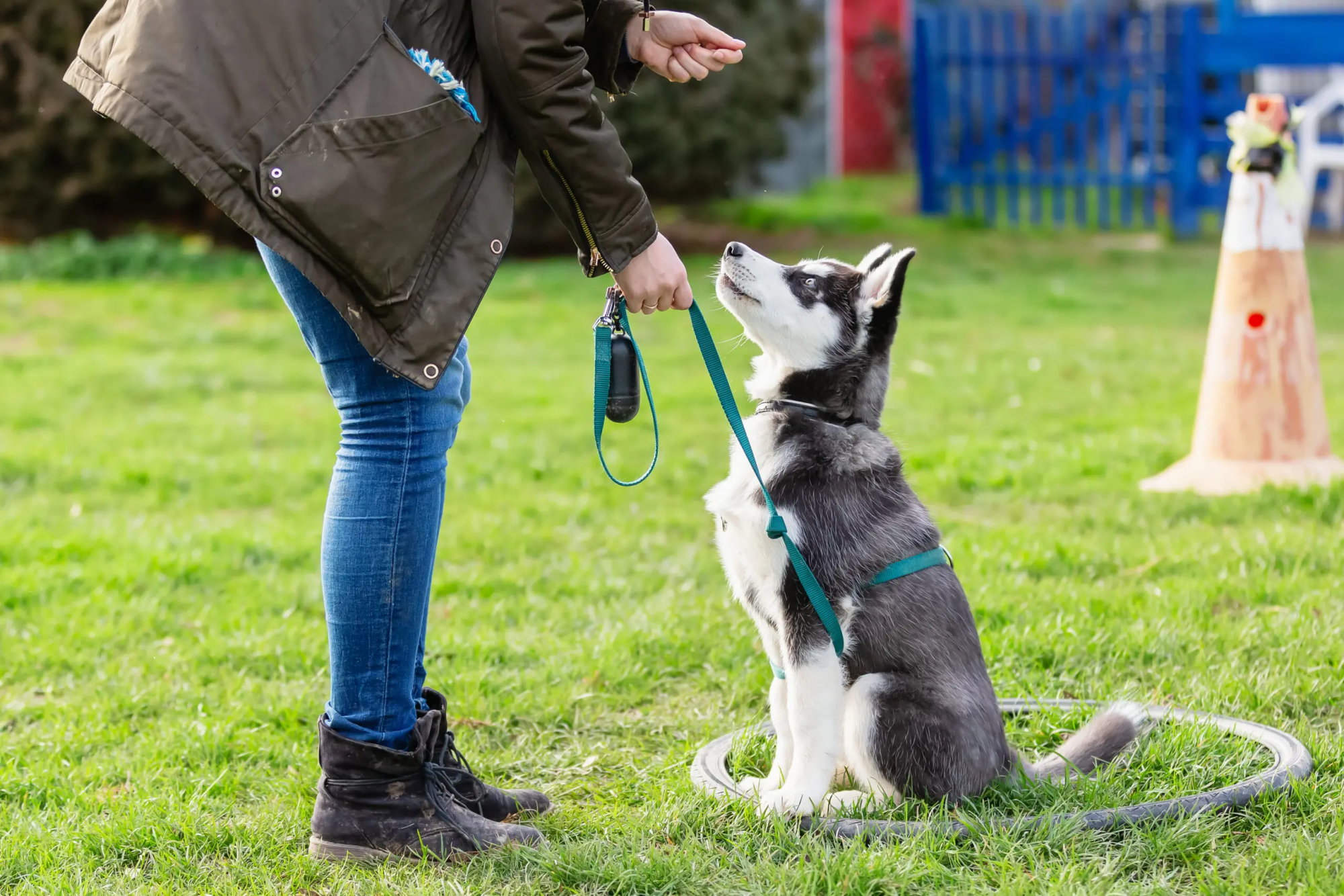
Building Trust Through Training
When you attend classes with your dog, the bond between you can grow stronger. The dog will begin to look to you for guidance on what to do. You, in turn, will grow to understand more about what your dogs behaviors will be, creating boundaries for them to follow, and knowing they will listen to your commands.
Make Life Easier
Obedience classes help to address negative behaviors in dogs. Whether they are jumping on your friends when they come over, or they have destructive behaviors – training can help. You can curb the negative behaviors and gain control. Additionally, regular training sessions can help stimulate your dog mentally and physically. This, in turn, can keep them from growing bored, and looking for other, more negative outlets like chewing up your couch cushion!
Communication With Your Dog
Training your dog gives you the opportunities to get to know them better. You can learn more about their personality, and how to understand them. In turn, your dog can learn the cues you are giving, and understand the behaviors you are expecting. It can also help your dog to come out of their shell. Positive reinforcement during training can encourage your dog to interact more with not only you, but the environment around them. This can also lead to a higher level of comfort when introducing new experiences to your dog!
Every Dog is Unique
Every training course is not going to fit with every dog. Some may be done to improve specific behaviors. Or, you may attend a course designed for your dog’s specific breed and their needs. If you have a dog that has been bred to dig, they may be digging your yard up. However, you can work specifically with a trainer to address this issue, and train your dog to use a specific outlet for digging – like a sandbox!
There is also a choice between group trainings and one-on-one trainings for you and your dog. Group sessions are typically a course you attend with your dog, training alongside other humans and dogs. This type of training will normally follow a specific curriculum for the training that is designed to cover a variety of tricks and behaviors.
One-on-one training is often used to address specific behaviors, or for dogs that have behavior and aggression issues when exposed to other dogs.
Take the time to look into training for you and your pup today! You can find local classes by checking out your local PetSmart Training Courses, or you can check out a variety of trainings offered by the Animal Humane Society. For tips on training with a brand new puppy, and how to start, you can check out our blog Training Talk: Bringing Home a New Puppy!
Disclaimer: This written content is meant to be educational and is not medical advice. Always consult a veterinarian about medical advice for your pet.
It’s Hot! Here is How You Can Help Dogs in Hot Cars This Summer
As the temperature rises, the danger it can pose to pets goes up too. If you see dogs in hot cars this summer, don’t panic. There are things you can do to help!

Why is it dangerous?
To begin, let’s look at why hot cars are so dangerous for dogs. First, is to understand just how hot it actually gets inside a car during the summer. When it is a nice, sunny, 75 degree day here in Minnesota, a car can get up to temperatures as high as 113 degrees! On an especially hot day, where it is 90 degrees out, it can get up to 128 degrees inside of a car!
This extreme heat is already very hot for us, and when you add fur on top of it with a dog, it gets even worse. The high temperatures put dogs at risk of developing heat related conditions, such as heat stroke. Some breeds, such as those that are flat faced, are at even higher risk of this.
Signs of Heatstroke
- Heavy panting
- Restlessness/anxiety
- Clawing at the window
- Trembling
- Collapse
- Foaming at the mouth
- Disorientation
- Vomiting
- Bloody diarrhea
- Seizures
What should you do?
If you see a dog inside a hot car, no matter how long it has been, you need to take action right away. Time is extremely critical for getting the dog out of the car.
- First thing to do is call 9-1-1. In Minnesota, the police have the ability to assess if force is needed to get a dog out of a hot car, so you will need their assistance if it becomes necessary to break the dog out of the vehicle.
- The next step is to find the owner. If there is a business nearby, notify them and ask the to us their loud speaker to request the owner immediately. Best case scenario, the owner is near by and can help get the dog out of the vehicle immediately. Inform them of their pets condition, and your concern for the pets safety.
Don’t try to lecture them or ridicule their decision to leave their dog in the car. It can be frustrating to deal with an owner who left their dog in a dangerous situation, but its important to protect yourself too. Keep the focus on saving the pet to minimize the chance of confrontation or fall out after the situation is resolved.
What can Law Enforcement Do?
The next step is understanding Minnesota laws. In Minnesota, there are several laws and statutes that cover leaving an animal inside a car (Minnesota Statute 346.57) by classifying it as endangering an animals health or safety. When the police arrive, the officers will be able to determine if a law was broken, and the repercussions from there.
If it is determined that the dog is in danger of overheating and heat stroke, than the officer may decide force is necessary to remove the dog from the car. From there, police will begin working to care for the dog, and you can offer assistance if they need it.
The police will focus on cooling the dog down slowly by:
- Moving pet to a shaded area where it will be cooler temperatures
- Offering fresh water (but not forcing the pet to drink)
- Drenching the pet in lukewarm water
- This should not be cold water
- Cold water constricts blood vessels in the skin and slows the body’s ability to cool itself
- Apply wet rags under the dogs arms, on their stomach, and on their neck
- Placing the pet in their vehicle with the A/C on
- Bringing the pet to a nearby animal emergency hospital
- There, the pet can receive IV fluids and further cooling measures
A second officer, if present, may begin their investigation, including trying to find the owner, talking to you as the caller, talk to other witnesses, and so on. This is to determine what laws, if any, have been broken.

Stay informed
Overall, the best thing you can do for a dog, or any pet for that matter, left in a car is call for help. Stay informed as laws develop and change on the topic, and be ready to stick around to help the police once they have arrived. You can also help by educating people you know about the dangers of leaving their dog in their car.
For more information on the dangers of hot cars, you can check out this article by The Humane Society of the United States. For a tasty way to keep your dog cool this summer, check out our blog on Summer Dog Treats!
Disclaimer: This written content is meant to be educational and is not medical advice. Always consult a veterinarian about medical advice for your pet.
Pet Poison Prevention Week – Keep Your Pet Safe!
By Katie Meneses

This year, Pet Poison Prevention Week Runs from March 17th to March 23rd. To help you learn more, we have listed some common hazards that come around every year in the springtime. From gardening materials to plants, there are many things to be aware of!
Fertilizers
As things warm up, people will start prepping their gardens with various fertilizers. Most only cause mild symptoms, like upset stomachs, but there are some that are toxic and can be fatal if ingested by a pet. Here are a few!
- Blood Meal – A great organic fertilizer, blood meal can be very upsetting for your pets stomach. It can cause vomiting and diarrhea, and in more severe cases, pancreatitis!
- Rose and Plant Fertilizers – many plant fertilizers contain a compound known as disulfoton, or other organophosphates. One teaspoon of this chemical can be fatal to a 55lb dog! Symptoms from ingesting this compound include drooling, urination, defecation, seizures, difficulty breathing, hyperthermia, and more.
- Iron – Iron is a common additive to fertilizers. Iron can lead to toxicity in your pets! Symptoms can include vomiting, diarrhea, lethargy, abdominal pain, shock, elevated heart rate, panting, and tremors.
Common Poisonous Plants
There are hundreds of poisonous plants out there, both inside and outside of the home. With more than 700+ plants out there that are a threat, it can be important to be aware of some of the common ones.
- Autumn Crocus
- Azalea
- Aloe
- Hyacinth
- Lilies
- Oleander
- Bird of Paradise flowers
- Daffodils
- Sago Palm
- Tulips

Household Cleaners
With warmer weather comes spring cleaning! As you start opening up your home and deep cleaning, it can be important to protect your pets from possible hazards caused by common cleaners at your home. Some products lead to symptoms such as vomiting, diarrhea, and skin irritation. More severe cases may show skin burns/lesions in their mouth, face, or body. It’s important to keep household cleaners out of their reach.
- Drain Cleaner
- Concentrated dishwashing chemicals
- Lime-removal products
- Oven cleaners
- Grill cleaners
- Concentrated toilet cleaners
- Bleach
This list is just a small collection of common hazards to watch out for with the warmer weather. For more information on toxins and poisons that can harm your pet, visit the Pet Poison Hotline. You can also learn about toxins in some of our other blog posts! Check out our blog on Lily Toxicity.
Disclaimer: This written content is meant to be educational and is not medical advice. Always consult a veterinarian about medical advice for your pet.
Three Tricks to Teach Your Dog in January
By Katie Meneses
January is National Train Your Dog Month! With the cold outside, it makes for a great time to teach a new trick to your new puppy, or your dog. Every dog, big or small, old or young, can learn new tricks. Here are a couple tricks, as well as some tips to teach them to your dog.

Trick 1: Handshake
A classic trick, handshake, is great for beginners. Start by placing a treat in your hand, and closing it into a fist. Then, hold your hand out to your dog, palm up but fist still closed. Your dog should naturally paw at your hand to get to the treat. When they do, immediately open your hand to let them get to the treat, and begin praising them. Repeat this, giving the command “shake”, or your chosen command cue, until your dog starts to understand the command. Then, you can start phasing out the treat, offering it instead after they put their paw in your hand.
Trick 2: Speak and Quiet
A common behavior problem among dogs is excessive barking. One great way to solve this is to teach the “Speak” and “Quiet” commands.
The best place to start is with the “Quiet” command. The first step is to set up a situation that will cause your dog to bark, such as knocking or a doorbell ringing. Once barking, go to the window and look outside briefly to acknowledge their concern. Then, return to your dogs side with a treat or toy and get their attention. Once they stop barking, give them the treat or toy and say “Quiet”, or your command cue of your choice. Repeat this, saying the command when they stop barking, but gradually increasing the time between when they get quiet and when you give the treat. This can take some time to teach, and should be practiced frequently, but briefly each time.
On the other end of this process is teaching the “Speak” command. Begin by encouraging your dog to bark naturally, as with the “Quiet” command. When your dog barks, give your command as “Speak”, or the que word of your choice, in a clear and upbeat voice. Then, praise your dog and give them a treat or toy. Repeat this process until your dog begins to understand.
Once your dog learns the commands separately, you can begin using them together. Practice by starting with the “Speak” command, and getting them to bark a few times before giving them the “Quiet” command.
Trick 3: Back Up
Teaching your dog to back up can be a fun trick to show friends, or a nice way to keep your dog from crowding you in the kitchen, or at the door. This trick does have to start with the stay command first. If your dog knows stay, it will make the new trick easier to train.
To begin, start by commanding your dog to “Stay”. Then, take a few steps away and turn to face them. Begin moving toward your dog. Some dogs will take a few steps back immediately when you approach. If your dog does not back up right away, continue stepping forward until they do, leaning forward slightly. When your dog backs away, you can say the command “Back up”, or your chosen command cue. Follow the command with praise, a treat, or a toy.
Continue to repeat this process until your dog picks up on the command. Most dogs pick up on this command quickly, and just need to practice a few times a day to get this trick under their belt!
Tips for Teaching Tricks
- Treats or Toys? – Every dog is different. Some prefer treats as rewards, while other prefer play.
- Training Clickers – Many dogs do well when a training clicker is used in the training process. Giving a few clicks, followed by a command, and then a treat, can help lead to quicker training sessions for some dogs.
- Positive Reinforcement – It is important to use positive reinforce throughout the training process. Keep your voice happy and upbeat, and never punish a pet for getting a trick wrong.
- How often? – Training should be worked into daily life. Make it apart of your routine, spending a few minutes a day revisiting the tricks your pet knows, or beginning to train the new ones. This keeps the training fresh for your dog.
- Consistency – the biggest part of training your dog is consistency. You must keep the training the same, especially when addressing problem behaviors. Consistency makes the training process easier throughout the process.
Make the best out of January, and celebrate National Train Your Dog Month by training your dog with some of these new tricks.
For more tips on training your dog, checkout this Hill’s Puppy Obedience Guide. You can also check out one of our blogs, Training Talk: Bringing Home a New Puppy, for some tips specific to puppy training.
Disclaimer: This written content is meant to be educational and is not medical advice. Always consult a veterinarian about medical advice for your pet.
Heatstroke in your pet!
By Dr. Maria Krenz, DVM – ZimmVet-763-856-4848
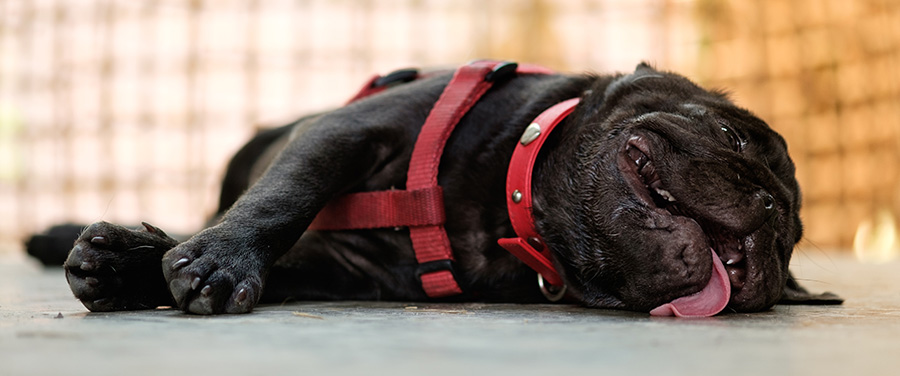
When a dog’s internal body temperature is above 105 degrees F, the dog may be suffering from heatstroke. Dogs have only a couple of ways to cool off—blood vessel expansion and panting. When dogs pant, they evaporate moisture from their tongues, nasal passages, and the lining of their lungs, and this cools them down as air passes over the moist tissue. They also cool off via vasodilation. Blood vessels, especially in the ears and face, expand, bringing overheated blood closer to the surface to cool down.
Signs of Heat Stroke
Heat Stroke in pets! Heatstroke in dogs is life-threatening and can also result in very serious complications. Recognizing early signs of heatstroke may help you remedy the condition before things get too serious. Early signs of heatstroke include:
- Heavy Panting
- Rapid Breathing
- Excessive Drooling
- Dry Mucous Membranes
- Bright red gums and tongue
- Skin that is hot to the touch
- High Heart Rate
Affected dogs become hyperactive and may have difficulty maintaining balance. As exposure to excessive heat goes on, the dog’s condition worsens and includes signs of shock, pale mucous membranes with white or blue gums, a very rapid heart rate, and a drop in blood pressure. The dog hyperventilates, and dehydration becomes more severe. Pupils dilate, the pulse becomes more irregular, and the dog has muscle tremors. They may become lethargic and unwilling to move, urinate or defecate uncontrollably, collapse, and become comatose.
Why Does Heat Stroke Occur?
Heatstroke generally occurs during the hottest part of the year, especially when it is humid. Contributing factors include: breed, age, physical fitness, if a pet is overweight, medical disorders and being in closed conditions such as a car.
How to Treat Heatstroke
Heatstroke therapy involves immediately trying to lower the dog’s body temperature. If you notice signs of heatstroke in your dog, it’s critical to stop any activity and help your dog cool down by:
- Walking or carrying the dog to a well-ventilated, cool area.
- Spraying or sponging the dog with cool (not cold) or tepid water, especially on the underside. Do not immerse the animal in cold water.
- Using a fan to blow cool air on them.
If at home cooling does not bring your dog’s body temperature below 103 degrees bring your dog to your veterinarian or local pet emergency clinic. Severely affected dogs require fluids, medication, support, and oxygen. Complications may not occur immediately, so it’s important to let your veterinarian determine the type of follow-up treatment required.
Conclusion
Heatstroke in Pets! Immediate action and correct treatment are so important because they can mean the difference between a swift and complete recovery and long-term complications.
Always provide plenty of cool fresh water, shade, and frequent rest periods when it’s hot. And never leave your dog in the car.
Please visit the AAHA website at https://www.aaha.org/your-pet/pet-owner-education/ask-aaha/how-can-i-prevent-heatstroke-in-my-pet/ for more information. More information on heatstroke and summer fun with your pet please visit our other blog post https://www.zimmvet.com/blog/wp-admin/post.php?post=885&action=edit.
Canine Influenza
By Dr. Maria Krenz, DVM – ZimmVet-763-856-4848

Canine influenza, or dog flu, has been in the news on and off when outbreaks occur. Recently there was an out break in the Minneapolis, Minnesota area that affected many. Make sure your dog is protected from the flu with the Canine Influenza Vaccination.
Spread of Dog Flu
Dog Flu is spread by direct dog-to-dog contact. The secretions from infected dogs coughing and sneezing can stay on objects and people that healthy pets may come in contact with. The virus is active in the environment for up to 48 hours, however, disinfectants can kill the virus. The flu is not seasonal, but can be contracted year round.
Signs and Treatments
Signs of Dog Flu may be mild to severe, but it can also be deadly. The signs of Dog Flu can look like other respiratory diseases such as kennel cough. Signs of Dog Flu can develop 2-4 days after exposure to an infected dog and illness may last up to 2-3 weeks. Signs can include:
- coughing
- sneezing
- nasal discharge
- eye discharge
- decreased appetite
- lethargy
- Fever
- In severe cases, a secondary bacterial infection can cause pneumonia. These pets have high fevers and trouble breathing.
Treatment includes antibiotics for secondary bacterial infections, fluids for dehydration, medication to reduce fever and nutritional supplements. If you notice any signs of illness, make an appointment with your veterinarian for an examination as soon as possible.
What dogs are at Risk?
Pets that are around other dogs are at higher risk of contracting canine influenza. Examples are pets that stay in a pet hotel, dog daycare, training class, dog parks and grooming facilities. Young and Senior Pets, along with pets that have medical conditions that affect their immune systems, are at higher risk of getting severe forms of the dog Flu.
Vaccination
A vaccination for Dog Flu is available. Dogs have no natural immunity to Dog Flu since it is a newer virus. The current vaccination is for both the H3N8 and H3N2 strains. If this is the first time your dog is getting the vaccination, it will need to be boostered in 3-4 weeks and then given yearly. This vaccination is recommended for dogs that are around other dogs frequently. This vaccination is available at ZimmVet. For more information on vaccines visit https://www.zimmvet.com/blog/canine-vaccine-overview/
In conclusion
As long as the facility you are bringing your pet to have good sanitation methods and protocols for disease outbreaks in place, you do not need to be overly concerned about bringing your pet around other dogs such as a Pet Hotel or Daycare. It is best practice that dog facilities require the flu vaccination to keep dogs healthy. If you are wanting more information you can visit the CDC website https://www.cdc.gov/flu/other/canine-flu/keyfacts.html.
**Disclaimer: This written content is meant to be educational and is not medical advice. Always consult a veterinarian about medical advice for your pet.
Dog Bite Prevention!
By Dr. Soderberg, DVM – ZimmVet – (763)856-4848
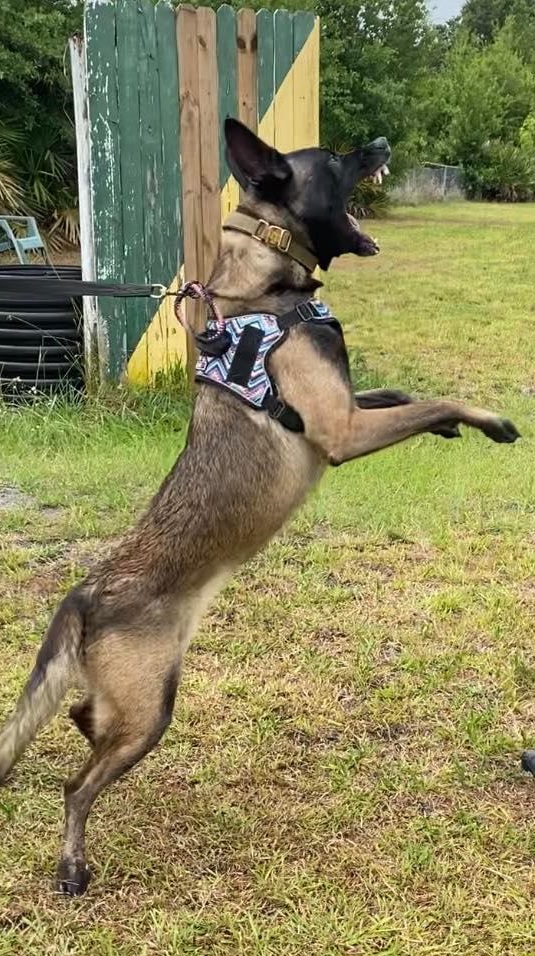
Dog bites pose a serious health risk to our communities and society. More than 4.5 million people are bitten by dogs each year in the United States, including more than 800,000 who receive medical attention for their injuries. More than half of those bitten are children.
Reasons a dog could bite:
- Dogs bite for a variety of reasons, but most commonly as a reaction to something.
- If the dog finds itself in a stressful situation, it may bite to defend itself or its territory. They can bite to protect something that is valuable to them, like their puppies, their food or a toy.
- Dogs can bite because they are scared or have been startled. They can bite because they feel threatened.
- Dogs might bite because they aren’t feeling well. They could be sick or sore due to injury or illness and might want to be left alone.
- Dogs also might nip and bite during play. Even though nipping during play might be fun for the dog, it can be dangerous for people.
- It’s a good idea to avoid wrestling or playing tug-of-war with your dog. These types of activities can make your dog overly excited, which may lead to a nip or a bite.
Preventing Dog Bites:
- Socialization is a good way to help prevent your dog from biting. Socializing your pet helps your dog feel at ease in different situations. Introducing your dog to people and other animals while it’s a puppy makes it feel more comfortable in different situations as it gets older. It’s also important to use a leash in public to make sure that you are able to control your dog.
- Responsible pet ownership builds a solid foundation for dog bite prevention.
- Carefully select the dog that’s right for your family
- proper training, regular exercise, and neutering or spaying your pet.
- Educate yourself and your children about how, or whether, to approach a dog.
- It’s important to know how to avoid escalating risky situations and to understand when you should and should not interact with dogs. Some risky situations include, but are not limited to:
- If the owner does not give permission to pet the dog, they are barking or growling, or if the dog appears to be hiding or seeking alone time.
- The dog is on the other side of a fence.
- If a dog is sleeping or eating, or playing with a toy.
- Sick or injured.
- Reading a dog’s body language also can be helpful. Just like people, dogs rely on body gestures, postures and vocalizations to express themselves and communicate. While we can’t always read a dog’s body language accurately, it can give us helpful clues as to whether a dog is feeling stressed, frightened, or threatened.
If you would like to learn more ways to make your pet into a well socialized good citizen please see https://www.zimmvet.com/blog/make-puppies-into-good-citizens-2/
More information:
If you have been bitten by a dog and the dog’s owner is present, request proof of rabies vaccination, and get the owner’s name and contact information. Clean the bite wound with soap and water as soon as possible and consult your doctor immediately or go to the emergency room if it’s after office hours.
Please visit https://www.avma.org/resources-tools/pet-owners/dog-bite-prevention for more information of Dog bite prevention.
Leptospirosis a risk to Pets and People!
By Dr. Maria Krenz, DVM – ZimmVet-763-856-4848

Leptospirosis (Lepto) is an infectious disease and can cause serious illness in dogs and people. This disease is from a spiral-shaped bacteria called Leptospira which live in water or warm wet soil. Any type of animal can potentially get infected. In fact, this has been a problem for years but is now more prevalent; which means Leptospirosis is a risk to all!
How Pets and People get Infected
Lepto is spread through bacteria in the urine of the infected animals. Humans and animals can potentially become infected through skin, bodily fluids (except for saliva), and mucus membranes (such as eyes, nose, and/or mouth). Dogs can pass the disease to each other as well as to people.
Lepto has become more problematic with the increase in development in areas that were once rural. As a result, pets may be exposed to more wildlife such as raccoons, skunks, squirrels, opossums, or deer that have been infected with the disease. In the event that your pet does become infected, it could mean that your pet may have been drinking, swimming, or walking through the contaminated water or soil.
Signs and Symptoms
The signs can vary and are nonspecific. However, some pets do not have any symptoms.
- Common signs to list that have been reported in dogs are:
- Fever
- Vomiting
- Abdominal Pain
- Diarrhea
- Refusing to eat
- Severe weakness
- Depression
- Stiffness
- Severe muscle pain
- Inability to have puppies
- Younger dogs (less than 1 year of age) tend to get the most severe forms of the disease.
- 87-100% of dogs that have been infected will have some degree of kidney dysfunction.
Treatment
The disease is treated with an antibiotic. More often than not pets will need other supportive treatments. Unfortunately, in some cases the disease has caused too much damage to the pet’s liver and kidneys which means the pet doesn’t recover.
Prevention
- Firstly, vaccinating your pet is key in preventing the infection for your dog. See below link for more information on vaccines.
- Second of all, the American Animal Hospital Associations guidelines recommend the vaccination for all dogs regardless of lifestyle!
- Unfortunately, there is no current vaccination for cats.
- The vaccination is often combined with the distemper which is considered a combination vaccine. The vaccine is administered yearly.
If your pet is diagnosed, make sure that you avoid contact with their urine. During this time, if your pet has an accident in the house ensure you wear gloves and clean well with disinfectant. Lastly, make sure you wash your hands!
In conclusion it is recommended that you vaccinate your pet; no matter what lifestyle you and your pet live! That way you can both continue to live a happy and healthy life.
CDC Fact Sheet: https://www.cdc.gov/leptospirosis/pets/index.html
Disclaimer: This written content is meant to be educational and is not medical advice. Always consult a veterinarian about medical advice for your pet.


